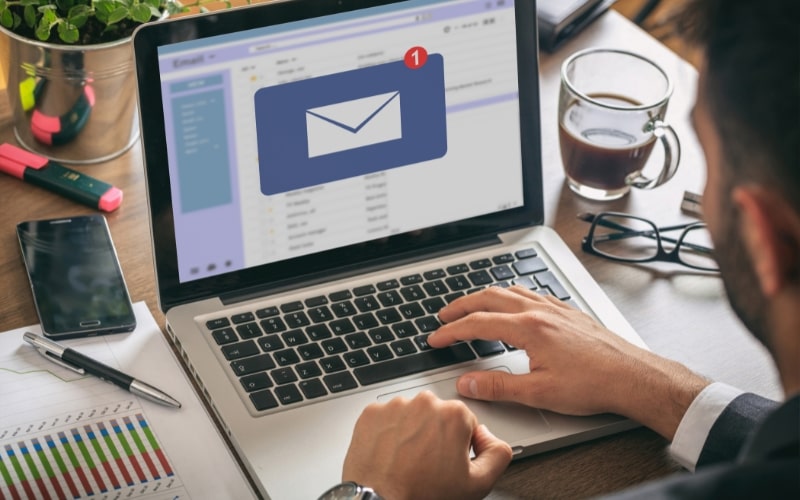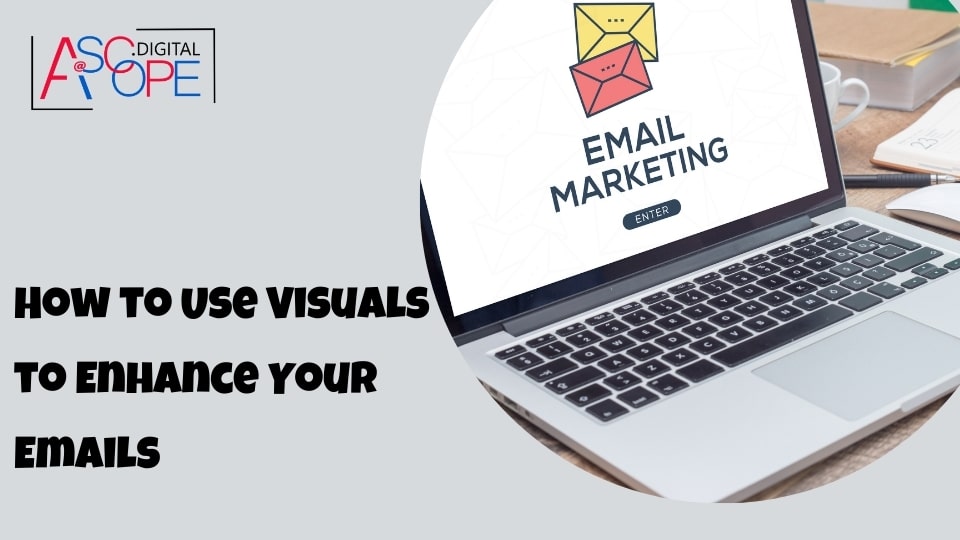Email marketing remains a powerful tool for businesses to connect with their audience, promote products, and drive conversions. However, in the age of visual content, simply relying on text-heavy emails may not yield the best results. Incorporating visuals can significantly enhance the effectiveness of your email campaigns. In this blog, we’ll explore various strategies and tips on how to use visuals to enhance your emails, improve engagement, and ultimately boost your traffic and sales.
The Power of Visuals in Email Marketing
Visuals have a profound impact on human perception and can greatly influence how your audience interacts with your emails. Studies have shown that people are more likely to remember information when it is presented with relevant images. Here are some key reasons why visuals are essential in email marketing:
- Increased Engagement: Visuals can capture the reader’s attention more effectively than text alone. They make your emails more attractive and encourage recipients to read further.
- Better Information Retention: People tend to remember visual content better than written content. By incorporating visuals, you can help your audience retain important information about your products or services.
- Enhanced Emotional Connection: Images and videos can evoke emotions more effectively than words. This emotional connection can lead to higher engagement and a stronger bond with your brand.
- Improved Click-Through Rates (CTR): Emails with compelling visuals are more likely to get clicked. This can lead to higher traffic to your website and increased chances of conversion.
Types of Visuals to Use in Your Emails

There are various types of visuals you can incorporate into your email marketing campaigns. Each type serves a different purpose and can be used to achieve specific goals. Here are some common types of visuals to consider:
Images
Images are the most commonly used type of visual content in emails. They can be used to showcase products, highlight key points, and add visual interest to your messages. When using images, consider the following tips:
- High-Quality: Ensure that your images are high-quality and relevant to the content of your email.
- Optimize for Load Time: Compress images to reduce load time without sacrificing quality. Slow-loading images can frustrate recipients and lead to higher bounce rates.
- Alt Text: Use descriptive alt text for all images to improve accessibility and ensure that your message is still conveyed if the images don’t load.
Videos
Videos are a powerful tool for storytelling and demonstrating product features. Including videos in your emails can significantly boost engagement and provide a richer experience for your audience. Here are some best practices for using videos in emails:
- Embed vs. Link: While embedding videos directly in emails can enhance user experience, it may not be supported by all email clients. Consider using a thumbnail image that links to the video hosted on your website or a video platform.
- Short and Engaging: Keep videos short and to the point. Aim to capture the viewer’s attention within the first few seconds.
- Call to Action (CTA): Include a clear CTA within or after the video to guide viewers on what to do next.
GIFs
GIFs are a fun and effective way to add animation to your emails. They can be used to demonstrate product functionality, create a sense of excitement, or add humor. When using GIFs, keep the following tips in mind:
- Keep It Simple: Avoid overly complex or lengthy GIFs. Simple, looping animations are usually more effective.
- Optimize File Size: Like images, GIFs should be optimized to ensure quick loading times.
- Use Sparingly: While GIFs can be engaging, using too many in a single email can be overwhelming. Use them strategically to highlight key points.
Infographics
Infographics are a great way to present complex information in a visually appealing and easy-to-digest format. They can be used to share statistics, explain processes, or provide valuable insights. Here are some tips for creating effective infographics for your emails:
- Clear and Concise: Ensure that your infographic is clear and easy to understand. Avoid clutter and focus on key information.
- Brand Consistency: Use colors, fonts, and styles that align with your brand identity.
- Mobile-Friendly: Design infographics that are easy to view on mobile devices, as a significant portion of email opens occur on smartphones.
Best Practices for Using Visuals in Emails
To maximize the impact of visuals in your email marketing campaigns, it’s important to follow some best practices. Here are several tips to help you use visuals effectively:
Relevance and Context
Ensure that the visuals you use are relevant to the content of your email and add value to the message you are conveying. Irrelevant or random images can confuse recipients and detract from your overall message.
Consistent Branding
Maintain consistency in your visual elements to reinforce your brand identity. Use your brand colors, fonts, and logo in your visuals to create a cohesive and recognizable look. This helps build trust and familiarity with your audience.
Balance Text and Visuals
While visuals are important, it’s also crucial to maintain a balance between text and images. Too many visuals can overwhelm the reader and make the email difficult to digest. Aim for a harmonious blend of text and visuals to ensure a smooth reading experience.
Accessibility Considerations
Make sure your emails are accessible to all recipients, including those with visual impairments. Use descriptive alt text for images and ensure that your email can be read without relying solely on visuals.
Optimize for Mobile
With a significant number of emails being opened on mobile devices, it’s essential to optimize your visuals for smaller screens. Ensure that images and other visual elements are responsive and look good on both desktop and mobile devices.
How Visuals Can Improve Traffic and Sales

One of the primary goals of email marketing is to drive traffic to your website and increase sales. Visuals can play a crucial role in achieving this goal. Here’s how:
Captivating Product Displays
High-quality images and videos of your products can capture the attention of your audience and entice them to visit your website to learn more or make a purchase. Showcasing products from different angles, highlighting unique features, and demonstrating their use can provide valuable information that encourages conversions.
Engaging Storytelling
Visuals can help tell a compelling story about your brand, products, or services. By creating engaging narratives through images and videos, you can create an emotional connection with your audience. This connection can lead to increased brand loyalty and repeat business.
Highlighting Special Offers
Use visuals to draw attention to special offers, discounts, or promotions. Eye-catching banners, countdown timers, and promotional graphics can create a sense of urgency and encourage recipients to take advantage of the offer.
Providing Social Proof
Including visuals such as customer testimonials, user-generated content, and reviews can build trust and credibility. Visual proof of satisfied customers using your products or services can reassure potential buyers and drive conversions.
Creating Interactive Experiences
Interactive visuals, such as clickable images or carousel sliders, can make your emails more engaging and encourage recipients to interact with your content. These interactions can lead to higher click-through rates and more traffic to your website.
Real-Life Examples of Visuals in Email Marketing

To better understand how visuals can enhance your email marketing campaigns, let’s look at some real-life examples from successful brands:
Example 1: Airbnb
Airbnb often uses stunning images of destinations and properties in their emails. These visuals not only capture the beauty of the locations but also inspire recipients to plan their next trip. By showcasing unique and attractive properties, Airbnb entices users to visit their website and book accommodations.
Example 2: Dropbox
Dropbox uses simple yet effective visuals to explain their features and benefits. Their emails often include animated GIFs that demonstrate how to use their services. These visuals make complex information easy to understand and encourage users to explore their platform further.
Example 3: Spotify
Spotify’s emails are known for their vibrant and engaging visuals. They use album covers, artist images, and personalized graphics to promote new music and playlists. These visuals create a visually appealing experience that encourages users to listen to new tracks and explore the platform.
The Importance of A/B Testing Visuals
To ensure that your visuals are having the desired impact, it’s important to conduct A/B testing. A/B testing involves sending two variations of an email to different segments of your audience to determine which version performs better. Here are some elements to consider testing:
- Image vs. No Image: Test the impact of including an image versus having a text-only email.
- Different Image Types: Compare the effectiveness of different types of images, such as product photos, lifestyle images, and illustrations.
- Video vs. Image: Test whether a video performs better than a static image.
- GIF vs. Static Image: Compare the engagement levels between animated GIFs and static images.
- Image Placement: Experiment with the placement of images within your email to see which layout drives more engagement.
Conclusion
Incorporating visuals into your email marketing campaigns can significantly enhance their effectiveness and help you achieve your goals. By using high-quality images, engaging videos, animated GIFs, and informative infographics, you can capture the attention of your audience, improve engagement, and drive more traffic to your website. Remember to follow best practices, maintain consistency with your brand, and conduct A/B testing to optimize your visuals for maximum impact.
Thus, improving traffic and sales for your website. Read more on the other reasons why your website isn’t getting traffic. By leveraging the power of visuals, you can create more compelling and memorable email campaigns that resonate with your audience and drive meaningful results for your business. Start experimenting with different types of visuals and see how they can transform your email marketing strategy


